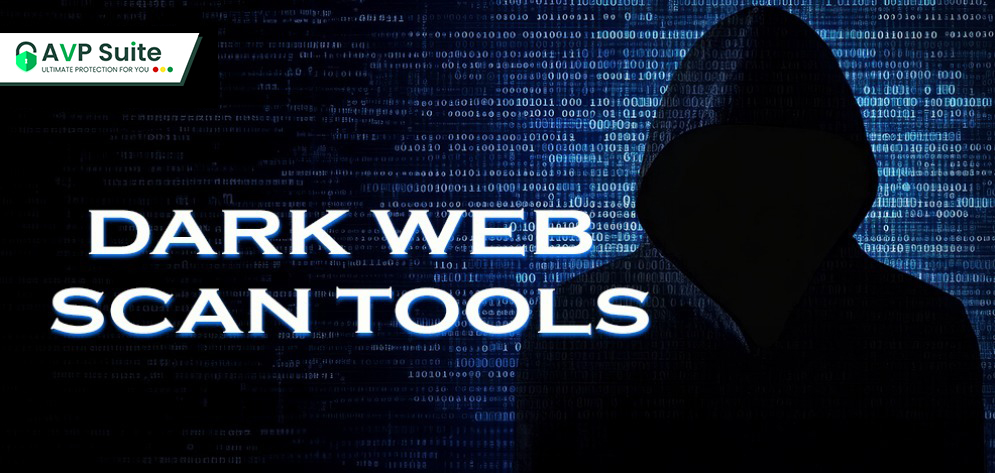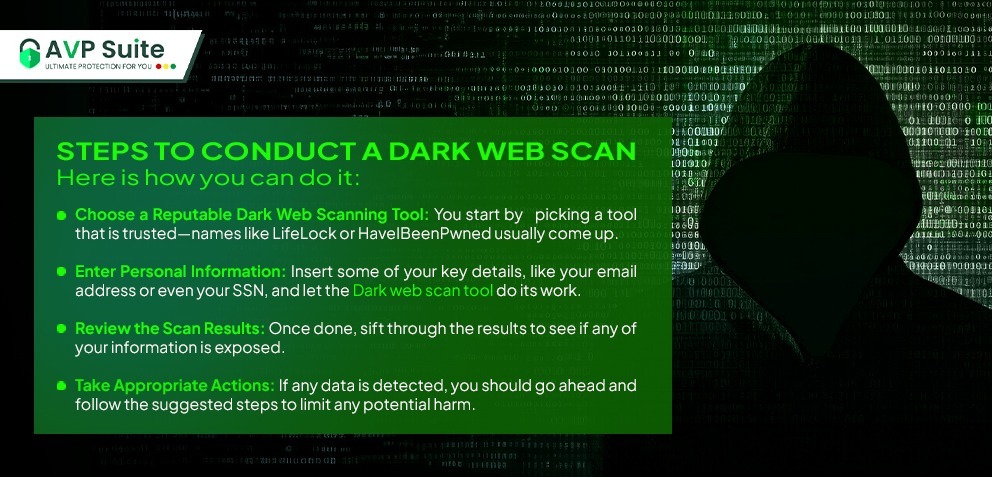Shield Your Data: Get Knowledge on Dark Web Scan Tools


The digital era of recent times often looms with the shadowy parts of the net. Often dubbed the dark web, it buzzes with illegal trades and shady activities like swapping stolen details. This murky sector of the internet attracts notorious activities and pressurizes many users to check their sensitive data using a dark web scan tool. People rely on these dark web scans for personal information to keep it away from unscrupulous hands, and the risk lurking in those hidden corners is real.
This comprehensive guide digs into dark web scanning tools, explaining what they do, why you need them, and how you can scan your details. Generally speaking, taking these proactive steps really boosts your online security; using such measures means you are staying one step ahead of unwanted risks, keeping your private info safer day by day.
A dark web scan tool is a specialized scanner designed to detect if personal information has inadvertently made its way onto the dark web—a hidden part of the internet not indexed by traditional search engines. These dark web scanning tools are the silent workers, checking those hidden sites, obscure forums, and underground marketplaces. This in place assists them in locating your information, like email addresses, Social Security Numbers (SSNs), and other details you might not want floating around.
Dark web scanners do not work by magic, either. You put in your details, and—using smart, intricate algorithms—the scanner digs through various dark web databases. If your information pops up, you get a quick alert, giving you a chance to act fast. Some dark web scanning services, like Malwarebytes, even bundle dark web scanning into their suite, so you get an extra layer of digital guard.
The ramifications of personal data exposure on the dark web are dire. The risks of scanning the dark web for personal information are comparatively serious when your data ends up in these murky corners.
Here are some key risks:
Identity Theft: Identity theft might sneak in, stealing all personal information, leading to your identity’s unauthorized usage. It turns into a small slip into a long ordeal that might take years to get fixed.
Financial Fraud: Financial fraud is another worry; leaked bank details can lead to unauthorized transactions and drained accounts.
Reputational Damage: Following the previous one is the hit to your reputation! It is your personal life that can mess with both your public image and private life.
It might sound like a plot from a cyber-thriller, but data breaches are for real! In one massive case, approximately 3 billion personal records (including Social Security numbers) were leaked and traded on the dark web. All in all, you have to stay alert and keep a check on your digital footprints. This might be the best step to keeping these risks at bay.
Scanning the dark web is not as complicated as it might seem. Follow the steps on how to scan the dark web for your information for error-free conduct.

Here is how you can do it:
The services of a dark web scan tool help to know that dark web scanning services can differ. Check out some of 2025’s top-ranking dark web scanning tools.
When choosing a social security dark web scanning service, it is essential to understand the differences between free and paid options:
Your Social Security Number (SSN) holds a power you might not expect. This unique code works like a personal key in our digital world and catches the eye of fraudsters who use it to cause chaos. One leaked SSN or dark web identity scan can let someone open a bank account or sneak into your finances, wreaking havoc before you even know what hit you. It is not just a number—it is your identity. Treat it with care and remember that even a small slip can lead to big problems.
Keeping your SSN safe today can stop a world of trouble tomorrow, so stay aware and act fast when risk looms.
Don’t Panic: If you find your SSN floating on the dark web, do not panic—take a deep breath and act swiftly.
Monitor Financial Accounts: Start by checking your bank and credit accounts for any odd movements.
Place a Fraud Alert: Reach out to credit bureaus and ask them to flag your file with a fraud alert, which slows down suspicious activity.
Consider a Credit Freeze: In some cases, locking down your credit might be the better choice to stop new accounts from appearing in your name.
Related Read: Best Dark Web Scanners (2025): Free vs. Paid Services Reviewed
To monitor your information on how to run a dark web scan, consider these best practices:
Even the best dark web scans can miss a spot. Be aware of:
Not All-Inclusive: Some hidden nooks remain out of reach, meaning no scanner covers 100% of the threat landscape.
False Positives/Negatives: False alarms can pop up while real issues might slip by unnoticed.
Accept that technology is not infallible and let your vigilance catch what automated tools overlook. A mix of careful reviewing and proactive scanning creates a safety net that no single method can offer on its own.
Do not put all your trust in dark web scans alone. In addition to dark web scanning, there are several steps you can take to protect your identity:
Strong, Unique Passwords: Bolster your defenses with strong, unique passwords that you update regularly.
Two-Factor Authentication: Two-factor authentication adds an extra barrier that makes hacking into your accounts much tougher.
Limit Sharing Personal Information: Think twice before oversharing personal details online, especially on social media.
You might also consider an identity theft protection service that offers wider monitoring beyond dark web scans, recovery assistance, and even financial coverage if trouble strikes. These services often include:
With digital exchanges dominating the new era, keeping a sharp eye on your info is essential. Regular monitoring paired with quick, decisive action can stop trouble before it escalates. No single method offers complete protection, but using a blend of dark web scans, strong passwords, and extra security measures makes you far more resilient.
Stay informed about new and free dark web scan tools and emerging risks, and remember that a little proactive effort today can save you from major problems down the line.